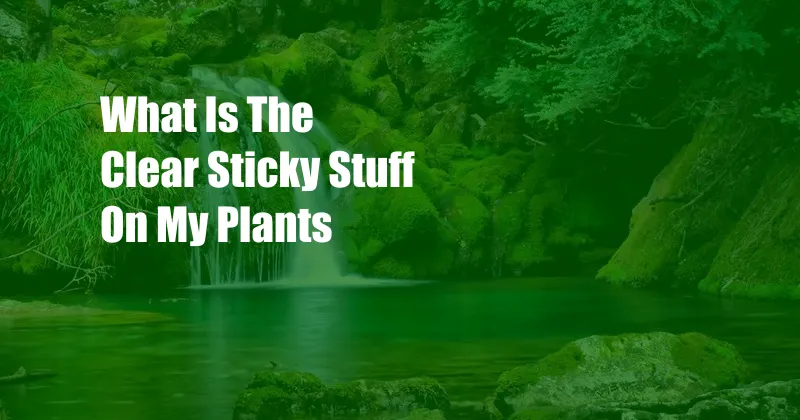
What’s That Clear Sticky Stuff On My Plants?
Have you ever noticed a clear, sticky substance on your plants? It’s often found on the stems, leaves, and buds. This substance is called honeydew, and it’s a sign that your plant has been infested with aphids, mealybugs, scale insects, or whiteflies.
Honeydew: A Plant’s SOS Signal
Honeydew is a sugary substance that these pests produce as waste. It’s essentially the plant’s equivalent of a distress signal. When pests feed on plant sap, they excrete honeydew as a byproduct. This sticky substance attracts ants, wasps, and other insects, which can further damage your plants.
Understanding Honeydew: A Comprehensive Guide
Honeydew is not just a sticky nuisance. It can have significant implications for your plant’s health and the overall ecosystem. Here’s a comprehensive overview of honeydew:
- Definition: Honeydew is a clear, sticky substance produced by aphids, mealybugs, scale insects, and whiteflies as they feed on plant sap.
- History: The phenomenon of honeydew has been known to gardeners and farmers for centuries. Its sugary nature has been utilized by humans to produce honey and other sweet delicacies.
- Meaning: The presence of honeydew indicates an infestation of pests on your plants, which can lead to decreased plant growth and health.
Eradicating Honeydew and Its Sources
Preventing and eradicating honeydew infestations is crucial for maintaining healthy plants. Here are some effective methods:
- IPM (Integrated Pest Management): Implement an IPM approach by promoting beneficial insects, using biological controls, and adopting cultural practices that discourage pests.
- Insecticidal Soaps and Oils: Horticultural oils and insecticidal soaps can effectively control pests by suffocating them and disrupting their life cycle.
- Strong Water Spray: Regular and strong water jets can dislodge pests and remove honeydew from plant surfaces.
Tips and Expert Advice for Managing Honeydew
From gardening enthusiasts to professional horticulturists, here are some valuable tips and expert advice to help you manage honeydew:
- Regular Plant Inspection: Regularly check your plants for signs of honeydew and pests. Early detection is key to addressing infestations promptly.
- Companion Planting: Plant species that naturally repel pests, such as garlic, onions, and marigolds, near your vulnerable plants.
- Ant Exclusion: Block ants’ access to your plants by creating physical barriers or using ant repellents.
Frequently Asked Questions (FAQs)
Q: Can honeydew damage my plants?
A: Yes, honeydew can attract insects, promote sooty mold growth, and interfere with photosynthesis.
Q: How do I get rid of honeydew?
A: Control pests, wash off honeydew with water, and apply insecticidal soaps or oils.
Conclusion
Honeydew is a clear indication of a pest infestation on your plants. By understanding its significance, implementing effective control measures, and seeking expert advice, you can restore the health of your plants and prevent future infestations.
Are you concerned about the clear sticky stuff on your plants? Don’t hesitate to reach out to an experienced gardener or pest control professional for further assistance.